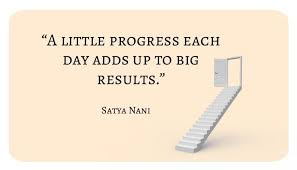- Good News

Loyce Morente
Jun 25,2020
Plastic Free Life: POSSIBLE!
Howie Severino’s documentary entitled “Plastic Republic” introduced the worst effects of single-use plastic and give a glimpse of the current situation in the cities where it is scattered to the rivers and sea, emphasizing how severe single-use plastic can affect our limited resources. Specifically, the documentary focused on some Filipinos who give importance to the effects of single-use plastic and inspired its viewers to somehow avoid single-use plastics through being creative and resourceful. The content aims to widen the viewer’s perspective in every piece of single-use plastic and how can we lessen the consumption for the sake of the future generation.
The documentary found an artist like Celso Lee who promotes creativity by limiting his sources to single-use plastic. He only gathers materials to nearby sari-sari stores that store plastics like bottle and tin. This innovative creation led to decoration for aesthetics, shoes, clothes, and even swing where he often sleeps. Even though it's procedural and complicated, he was able to create affordable and durable products that can be sold in the market. He also stated that he can teach the procedure to the jobless in the community so that more single-use plastics will be utilized while earning. Despite its objective to maximize single-use plastic while gaining, the challenge is competing with other products in which the consumer satisfies better. More products which are aesthetically pleasing, sanitized, and branded are prevailing in the market. Thus, few consumers only appreciate the creativity of the product in utilizing single-use plastics in comparison to a greater number needed in able for the industry to grow. The documentary emphasizes the effects of single-use plastic in the long run, and if it broadens the viewer’s perspective then Celso Lee’s products are marketed. As to the consumer, we should also appreciate this kind of talent by buying some of its products and promote this kind of industry for greater competition.
A family in Binangonan Rizal also featured in the documentary where they practicing to not use single-use plastic. They shared their method of substituting single-use plastic such as using the bride’s veil in keeping dry goods and Tupperware in storing wet goods like fish and meat when they are going to the market. In addition, they also change the way they consumed their individual plastic needs such as using cloth diapers instead of disposable diaper and using a menstrual cup instead of a sanitary napkin. According to them, to be a plastic-free person, reusable products should already in your bag in case you suppose to consume single-use plastic. The family believed that people only have a mindset of the present, not minding what will happen in the future. When people continuously consume single-use plastic, thinking that it is just a piece of plastic today, they also keep a vast amount of accumulate plastic in the future, polluting water, land, and even the air we breathe. This mindset was shared among her co-employee and friends, establishing the creation of “eco brick” where they keep single-use plastic such as sachet and insert it in a bottle and donate to some environmental groups. This eco brick can be used as a substitute as a block when building rooms. Although the foundation is risky, it can still accommodate in making rooms, but not promising when it comes to quality. The lifestyle shared in the documentary encourages more viewers to start living in a plastic-free life despite the abundance and convenience brought by single-use plastic. Like this family, they also have a hard time adjusting their lifestyle without plastic, but they overcome and now making plastic-free life possible. It might be costly and hassle in substituting plastic but the investment is worth in the long run if we are now experiencing less waste in our surroundings, cleaner air to breathe and live, and clearer streams and river.
The government has a huge part in the existing problem in single-use plastic. In Fernandez, Pampanga, a barangay official leads the rightest way of disposing of waste starting from the way residents separate biodegradable and non-biodegradable before collecting to the way they disposed of the community’s waste properly. Residents said that their trash will not be collected if it is not properly segregated. In the present, they are not having difficulties in segregating and even favorable in the system. The barangay has been known for strictly implementing the Republic Act 9003 also known as the Ecological Solid Waste Management Act of 2000 in the province. Regardless of the existence of this law, there are only a few cities that strictly implement this law. The government has failed in implementing this law as the Philippines ranked third in most production of single-use plastic in the world. The last natural mangrove place in Metro Manila, located in Manila bay also surrounded by single-use plastic and destroying the natural habitat of the fishes. The documentary highlights that the community successfully implements the law, yet other communities are struggling.
In conclusion, the obliviousness of the community results to further consumption of single-use plastic. As they are not informed about the effects of plastic on their surroundings, they are also denying the rights of the future generation to live without pollution. Likewise, the government initiation in restarting better implementation of the law in every barangay will help every individual to acknowledge proper disposal of waste instead of throwing it somewhere and affecting other habitats. The companies should also make social responsibility movement by using biodegradable plastics which will not pollute the ecosystem. If they stop using single-use plastic, it will be a great move for the country to lessen the plastic we consume. Living without plastic is possible like how the family in Binangonan Rizal did, so as an individual we should also start living a life without plastic. Little by little of removing plastic in our daily needs until we habituate ourselves not using plastic anymore. Lastly, supporting artists like Celso Lee promotes an industry where utilizing single-use plastic will be profitable for the jobless. To sum it up, the effectivity of the law, reusing single-use plastic, and getting rid of single plastic should start with ourselves.










.png)








Comments